In September 2016, I ran my first race: a 10k. Afterwards, full of enthusiasm and zeal, I wrote this blog for an old website. I remember wanting to sign up for a half-marathon, but nothing beyond that. Two years and two ultramarathons later, I’m re-publishing it as a guide for beginners, and something for me to smile back on.
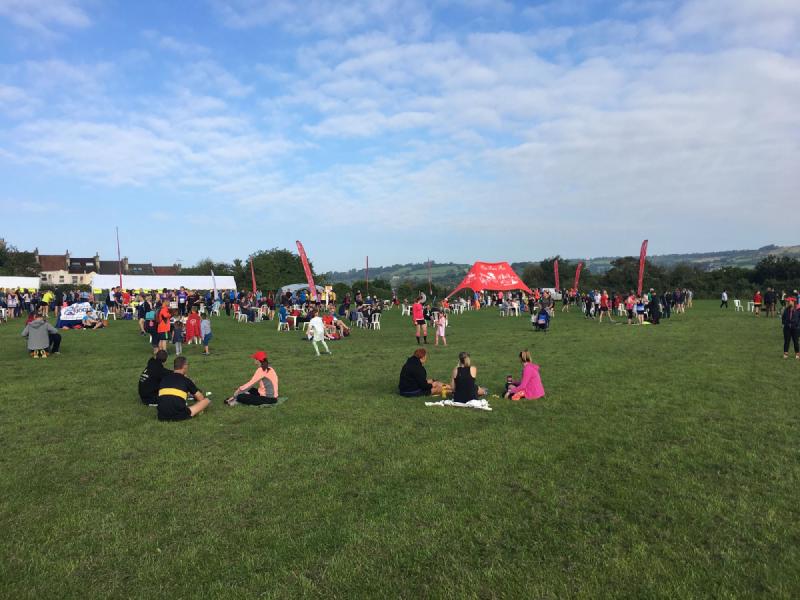
On September 18th 2016, I ran the Relish Running Two Tunnels 10k. I finished a whisker under 50 minutes, which I was very, very happy about.
I did just under 6 weeks training and missed a few of the long weekend runs. As a result, this was the first time I’d ever actually run 10 kilometres, let alone an official 10K event.
I actually really enjoyed the training, the build-up, and the race itself. So much so that I’ve immediately signed up for a tougher race in November… The Trionium Hilly Ultra 10K, and now the Bath Half next year.
So here’s how I went about getting prepared for my first 10K. I hope it’s useful if you have a 10K coming up, or feel inspired to sign up for one.
Background
I got over-excited watching Team GB at the Rio Olympics and decided I wanted to try training for a running event. I looked at the Avon Valley Runners Forthcoming Events page and found the Two Tunnels 10K, which was the nearest to me, and gave me a month and a bit to get ready.
I had run before then. I went through a period, probably about a year or so ago, where I was running twice a week on a treadmill. I didn’t track pace or train to run faster, it was just a nice lunchtime workout at the gym. I usually ran for 20 minutes.
That stopped when I changed job and moved out of Bath. Having fields all around me, and summer upon me, I started running outside maybe once a week, a few months back. At some point, I started using RunKeeper to track my runs, and that along with the addition of heart rate data via my FitBit Charge HR seemed to spark my interest in getting better at running.
Training
After booking on the 10k, I had a quick search around for a training plan, and came across the verywell 4 Week Beginner 10K Training Schedule, which I used as rough guide—ignoring most of it—and just taking the three runs per week format, using their suggested distances. I’ve converted the distances they suggest to the metric system below because we don’t need to live in the dark ages anymore.
- All paces are minutes per kilometre (min/km). The cool thing about running a 10k is that it’s easy to predict your finish time from your average pace at any time. So during the 10K, I knew that an average pace below 5:00 min/km would result in a sub-50 minute time, 5:10 km/min would see me finishing in 51 minutes, etc etc. You can easily set apps like RunKeeper up to shout this average pace at you every kilometre.
- ER stands for an easy run, and LR long run. I largely ignored what these really meant, until week 3.
Week 1
- Day 2: 3.2km ER (5:45 min/km)
- Day 4: 3.2km ER (5:26 min/km)
- Day 6: 4.8km LR (5:44 min/km)
Week 2
- Unplanned 2.76km run Monday morning. Faster pace. (5:15)
- Day 2: 4km ER (5:57 min/km)
- Day 4: 4km ER (5:29 min/km)
- Day 6: 6.4km LR (5:27 min/km)—Woohoo! Longest run to date.

Week 3
I actually stopped to think this week about what was meant by an easy run and concluded that I should try running slower. I found this pretty hard, as it felt like I wasn’t pushing myself as much, and I wanted to get faster!
On the plus side, slowing my pace allowed me to focus on my posture, something that I’d become more aware of through some recent Bowen Technique sessions, a fascial release system which helps you learn to move and stand more naturally.
- Day 2: 4.8km ER (6:04)—Noticed here the tendency to roll the hips forward and arch the lower back unnecessarily. Creates a lot of tension when running
- Day 4: 4.8km ER (6:22)
I had planned an 8km run for Sunday, but it was a busy Bank Holiday and I didn’t end up having time. Strike one.
Week 4
- Day 2: 4.8km ER (5:37 min/km)
- Day 4: 4.8km ER (5:04 min/km)—whoosh! Having missed the last Sunday long run, and having a boozy curry Wednesday, I pushed myself a little more here.
Missed my 8km Sunday long run again. Strike two!
Week 5
You can see the pace increasing again here. This was the week I really started to feel that I had improved my running technique, mostly from letting my back lengthen, and leaning forward slightly. It began to feel more like I was letting my legs do what they do, whilst I just made some postural adjustments when I noticed tension.
- Day 1: 4.8km ER (5:15 min/km)
- Day 3: 4.8km ER (5:29 min/km)
- Day 5: 8km LR (5:10 min/km)—finally, a long run closer to 10K. Very happy with the pace, and knew I could run faster on race day.
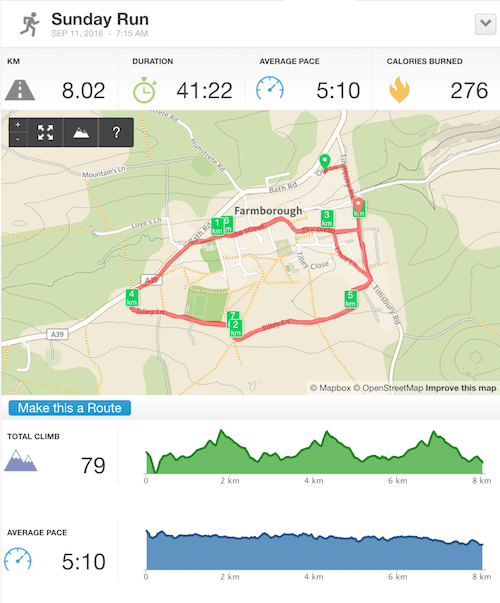
Week 6
- Day 1: 2km ER—relaxed jog with Gina
- Day 3: 4.8km ER (5:43 min/km)
- Day 5: 3.2km ER (5:25 min/km)
Other Training
As well as the above training, I was also doing Kettlercise at Balance Lifestyle and Fitness every Wednesday. I’m sure the strength training really helped with leg and core strength and gave me a lot of capacity to really kick during the final few KMs of the race. If you don’t know about Kettlercise, these are pretty intense workouts…

I also occasionally went to Boxercise on Tuesday, which was less strength focused, but an equally good workout:

Route and Gear
My original goal when signing up for the 10K was to run it in under an hour. But after all the training, I thought I should be able to finish in 52 or 53 minutes.
Here’s what the route looked like:
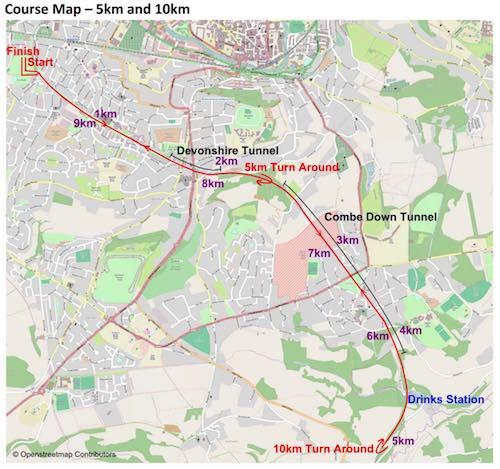
And the beauties I ran it in: Nike Free 4.0 Flyknit, Men’s Running Shoe
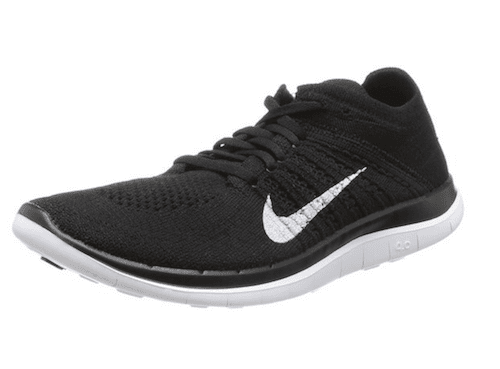
Which are unfortunately so comfortable that I now live in them…
Race Day
On the morning of the race, I was very nervous. I couldn’t stop pacing, ate too much peanut butter on toast, and just wanted to get on with it.
The start was actually the toughest. I went off like a rocket and began to worry about so many things going wrong. I had the continuous anxiety that whatever I was doing I had to keep it up for longer than I ever had before. What if I twisted my ankle or fell over?
I was also wishing I’d gone to the toilet again before the start of the race. And wishing I’d eaten one less bit of peanut butter on toast…
The Tunnels themselves were dark, cool and fast. They were a relief from the heat, and very level. Unfortunately, they also blocked the GPS tracking on my phone and messed up my average pace reading. As a result, I had no idea how fast I was running, even though RunKeeper decided to loudly announce that I had run a 1-minute kilometre. I just kept running at what felt like a decent pace.
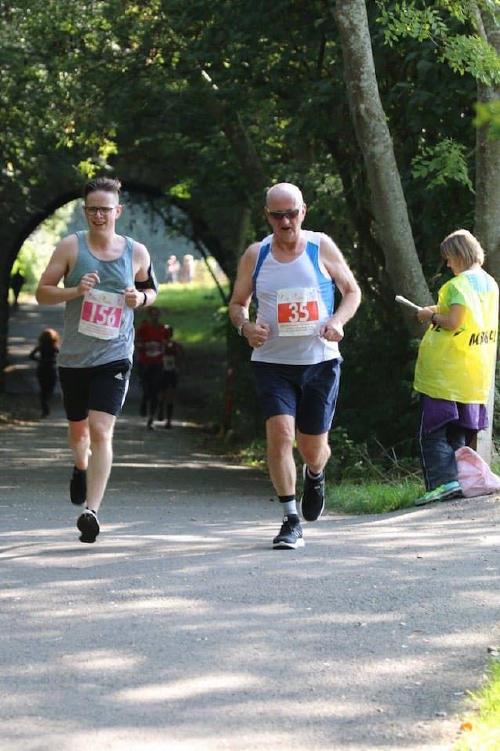
The middle period was tough too, but I was more comfortable in my pace. I tried to take on some hydration, but that just resulted in me inhaling water, spitting it down my front, and then trying not to heave. I will be working on this technique for next time.
And then things got easier. As I knew I was coming up to 6 and 7km, my legs just seemed to go into auto. I felt seriously in the zone. RunKeeper seemed to have regained its sense (or satellite), and was telling me I was running close to 4:45 min/km pace.
It was then I realised I could run it sub-50! And I did, but it was by the closest of margins— four-tenths of a second! My official time was 49:59.6. I’m relieved I kept pushing until the end, as going a slither the other side of 50 probably would have been really annoying!
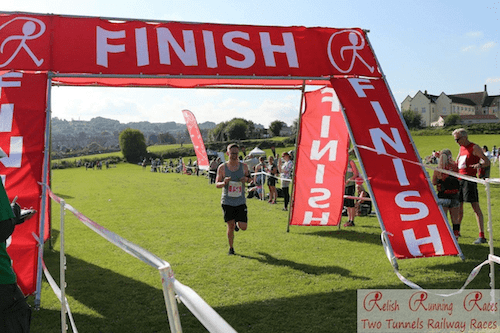
Here’s the run on Strava:
Tips on technique
I paid a lot of attention to how I was running when I was training. I think this postural awareness really paid off and helped me improve my technique. If I could sum up what I discovered, it would be:
- Allow your lower back and core to naturally lengthen, like a cobra. This is what people mean when they talk about “running tall”
- Learn to lean forward slightly, like you’re almost falling over. This gives you a natural momentum and drive. Your legs will do the rest. You need to experiment a bit with this, as it will feel strange at first
- In terms of what else there is to do with your legs, lead with your knees—don’t strain to plant your feet in front of you, and aim to land flat-footed, not heel first.
- Look straight in front of you, at eye level, not down at the floor. Let your neck lengthen
- Let your shoulders relax when you noticed they’re bunched up. It’s easy to hold tension in them
Really getting interested in how we run has given me the running bug, and now I can’t get enough.
Since this race, I’ve bought and read The Art of Running: Raising Your Performance with the Alexander Technique. If you’re looking to improve your running technique, enjoy running more, and enhance your body use overall, it’s an excellent read.
Good luck!
10 Oct 2016
